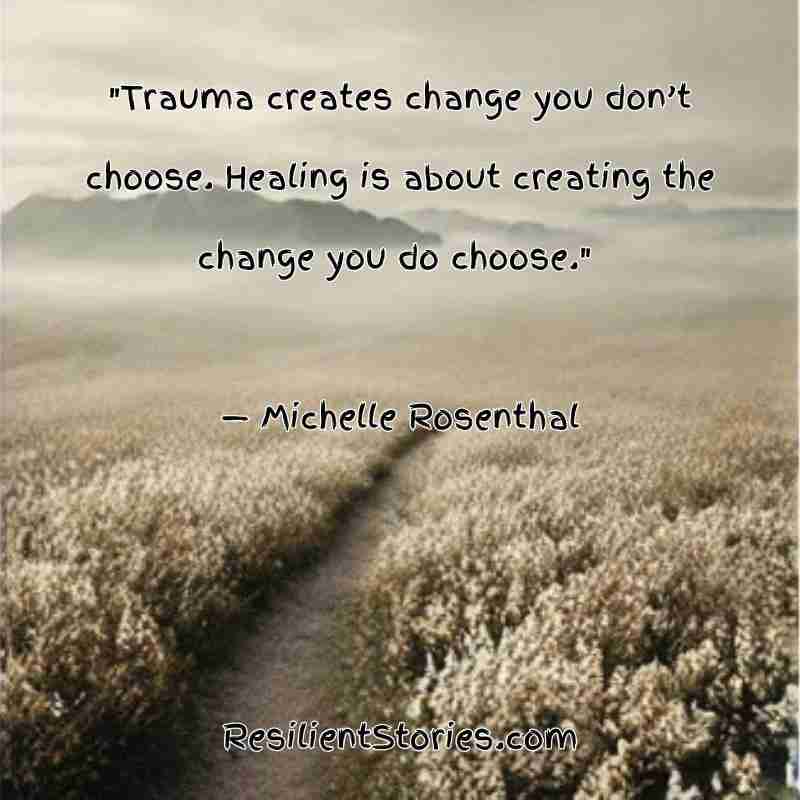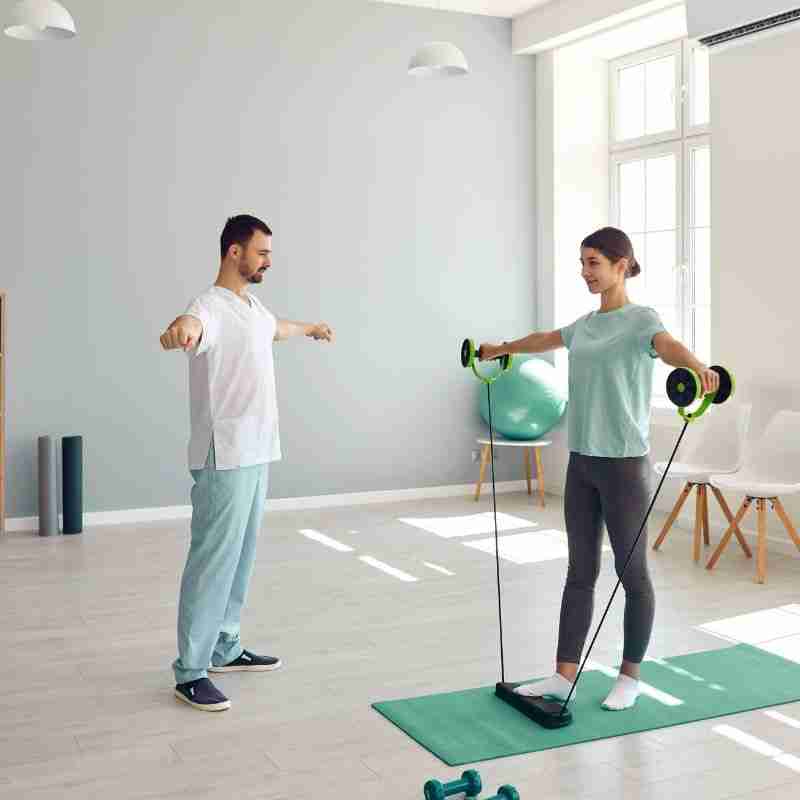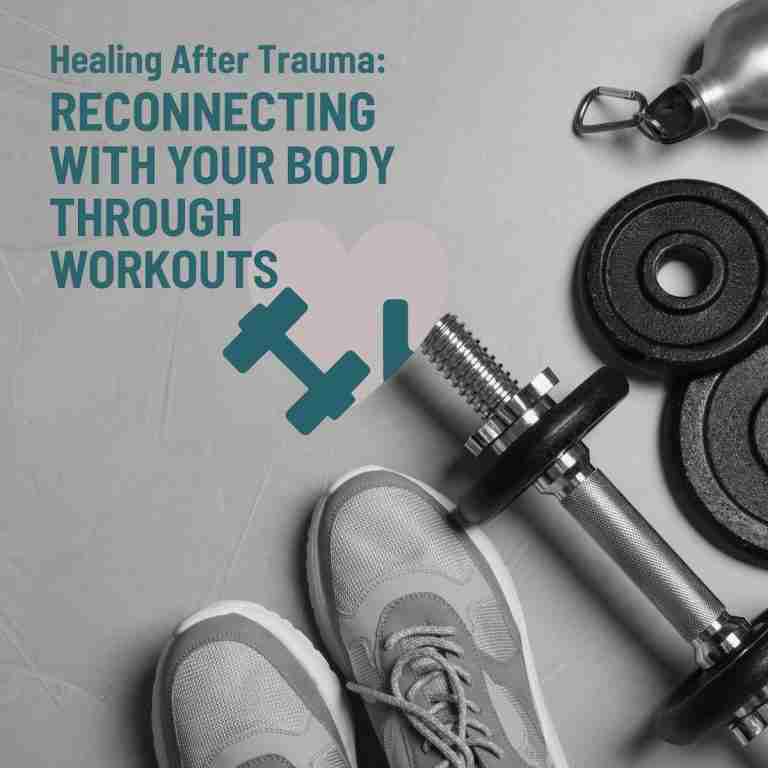Workouts After Trauma: How to Reconnect With Your Body
After trauma, the body doesn’t just carry memories—it holds reactions, reflexes, and guarded tension we may not even notice. That’s why workouts after trauma aren’t about calorie burn or personal bests. They’re about something much deeper: feeling safe in your skin again.
At Resilient Stories, we believe movement can be one of the most empowering tools in the healing process—when it’s done with care and self-awareness.
Whether it’s the slow rhythm of walking, the gentle sway of qigong, or simply learning to breathe through a stretch without bracing, trauma-informed movement meets you exactly where you are.
This guide walks alongside those who are healing, exploring how trauma shapes our relationship with movement, and how to rebuild that connection gently. Because your body isn’t broken, it’s a survivor.
And with care, choice, and compassion, movement can become not just a tool for fitness, but for remembering who you are beneath the armor.

What Trauma Leaves Behind
Trauma is a complex and multifaceted issue that can have a profound impact on an individual’s life. It can result from a wide range of experiences, including physical accidents, emotional abuse, and natural disasters.
Traumatic events can cause significant emotional distress, leading to the development of mental health conditions such as post-traumatic stress disorder (PTSD).
Understanding trauma is crucial for providing effective support and treatment to those who have experienced traumatic events.
By recognizing the deep-seated effects of trauma, we can better address the needs of those affected and help them on their path to recovery.
Understanding and Healing After Trauma
Trauma occurs when an individual experiences a traumatic event that causes physical or emotional harm. This can include experiences such as childhood trauma, physical abuse, or exposure to natural disasters.
Traumatic stress reactions can vary widely, but common reactions include hypervigilance, avoidance behaviors, and intrusive memories.
Trauma can also have a significant impact on an individual’s physical health, leading to the development of physical symptoms such as headaches, digestive issues, and sleep disturbances.
Recognizing these common reactions and physical symptoms is essential for understanding how trauma affects the body and mind, and for developing effective coping strategies.

Post Traumatic Stress Disorder (PTSD)
Post-traumatic stress disorder (PTSD) is a mental health condition that can develop after an individual experiences a traumatic event.
Symptoms of PTSD can include flashbacks, nightmares, and severe anxiety, as well as physical symptoms such as a racing heart and tremors.
PTSD can be treated with a range of therapies, including cognitive-behavioral therapy (CBT) and eye movement desensitization and reprocessing (EMDR).
Developing coping strategies, such as exercise and self-care, can also help individuals manage their symptoms and improve their overall well-being.
By incorporating these strategies into daily life, individuals with PTSD can find ways to navigate their symptoms and enhance their quality of life.
Healing After Childhood Trauma
Childhood trauma can have a lasting impact on an individual’s life, increasing the risk of developing mental health conditions such as depression and anxiety.
Adverse childhood experiences (ACEs) can also affect an individual’s physical health, leading to the development of chronic diseases such as heart disease and diabetes.
Providing support and treatment to individuals who have experienced childhood trauma is crucial for promoting healing and recovery.
By addressing the emotional scars and physical symptoms associated with childhood trauma, we can help individuals build resilience and improve their overall well-being.
How Trauma Affects Movement
When your body has been in survival mode, movement can feel like a threat instead of a gift.
This isn’t about “pushing through”—it’s about listening deeply, honoring your limits, and offering yourself the grace to move at the speed of trust.
Trauma can show up physically in ways people don’t always expect. Recognizing physical sensations, such as muscle tension and shallow breathing, can indicate stored trauma in the body.
Muscle tension, shallow breathing, or sudden bracing movements often show that the nervous system is still in protective mode.
Survivors may find that certain exercises, especially ones that feel intense or restrictive, can trigger these automatic responses.
Understanding how trauma lives in the body is essential when planning any workout routine.
A trauma-informed approach avoids pushing through discomfort. Instead, it focuses on tuning into the body’s signals and adjusting as needed.

Workouts After Trauma: Reclaiming Movement on Your Terms
Low-impact exercises like walking, swimming, or gentle yoga provide structure without overwhelm. Activities like tai chi and qigong can help individuals express emotions through movement, facilitating emotional expression and processing.
These activities are adaptable, letting survivors control intensity and pace. Grounding exercises, such as focusing on foot pressure or slow breathing, can also be used before or during sessions to ease anxiety and promote present-moment awareness.
Chair-based stretches, mindful movements, or bodyweight exercises offer control and safety. They can be done in a familiar space and help build confidence and physical trust step by step.
Creating a Trauma-Sensitive Environment
Where and how you move matters. Individuals who have experienced trauma may find their bodies in a persistent state of high alert, leading to increased anxiety.
A trauma-sensitive setting includes elements that help people feel secure, like being able to see the exit, adjust the lighting, or use a quiet space. Mirrors, loud music, or enclosed layouts can increase anxiety and should be avoided where possible.
Instructors play a critical role. Supportive cues such as “only if it feels right” or “try this if you’re comfortable” help participants manage their experience. Being free to rest, modify movements, or opt out without judgment is essential in trauma-aware fitness sessions.
Building Strength Without Pressure
Strength-building doesn’t have to be intense. Simple moves like wall push-ups or seated leg lifts can support progress while keeping the focus on control and safety.
Using resistance bands or light weights gradually introduces challenge at a pace the individual sets.
This approach also builds body awareness, learning to sense when something feels right and when it doesn’t. Survivors benefit most from routines that evolve based on comfort, not performance targets.
For those interested in supporting others through trauma-informed fitness, professional training can help them develop the right skills.
Providers like Study Active offer courses that teach how to become a qualified personal trainer, with specialised modules on working with special populations, including trauma survivors.
This knowledge helps fitness professionals offer inclusive, supportive environments that prioritise healing as much as movement.
Supporting Recovery After Trauma Through Awareness
Practices like tai chi, slow stretching, or breath-based movement help reconnect the mind and body. Somatic symptoms, such as muscle tightness and fatigue, can indicate unresolved emotional distress.
These methods focus on sensations, muscle tightness, breathing rhythm, or skin contact with the ground, assisting survivors in staying present and managing emotional responses.
Sensory grounding tools, such as noticing five sights or four textures, can help break cycles of distress. Recognising tension, adjusting pace, or pausing altogether allows survivors to avoid traumatisation and move safely within their limits.
Stress Disorder (PTSD) Management
Managing PTSD requires a comprehensive approach that incorporates therapy, self-care, and lifestyle changes.
This can include developing a workout routine, practicing relaxation techniques such as deep breathing and meditation, and seeking support from friends and family.
Individuals with PTSD can also benefit from group therapy, which provides a safe and supportive environment for sharing experiences and developing coping strategies.
By combining these elements, individuals can create a holistic plan for managing their symptoms and improving their mental health.
The Power of Personal Rituals
Self-care is an essential component of the healing process for individuals who have experienced traumatic events.
This can include activities such as exercise, yoga, and spending time in nature, as well as practices such as journaling and mindfulness meditation.
Developing a self-care routine can help individuals manage their symptoms, improve their mood, and enhance their overall well-being.
By prioritizing self-care, individuals can take the first step towards recovery and develop the strength and resilience needed to navigate the challenges of daily life.
Your Healing, Your Pace
No two trauma recovery journeys are the same. Finding a new path for emotional recovery through personalized movement practices can be crucial.
Some people may prefer solitary walks in nature, while others find comfort in gentle group classes. Start small: one movement, one setting, one response.
Notice how your body feels during and after.
If something feels wrong, it’s okay to pause or change direction; this kind of self-trust transforms movement from a risk into a reliable emotional and physical well-being tool.
A New Relationship With Your Body
Healing after trauma isn’t a race, and it certainly isn’t linear. Some days, a deep breath might be the bravest movement you make.
Other days, it might be a full walk, a stretch, or simply the decision to show up for your body with kindness.
At Resilient Stories, we believe in healing that honors every part of you—the messy, the miraculous, and everything in between. Movement after trauma isn’t about looking a certain way.
It’s about listening to your body like it’s telling you the story of your survival—because it is.
So take it one breath at a time. Let movement become your permission slip, your grounding practice, your quiet revolution. You deserve a relationship with your body that feels like coming home.









